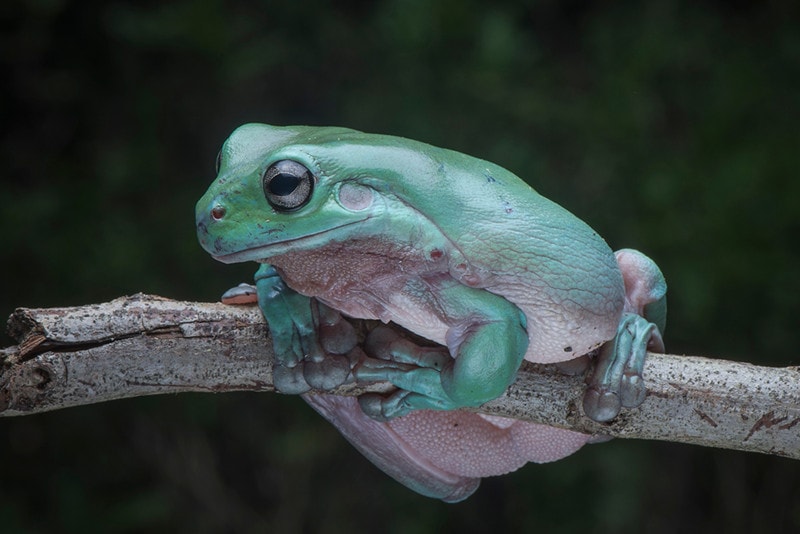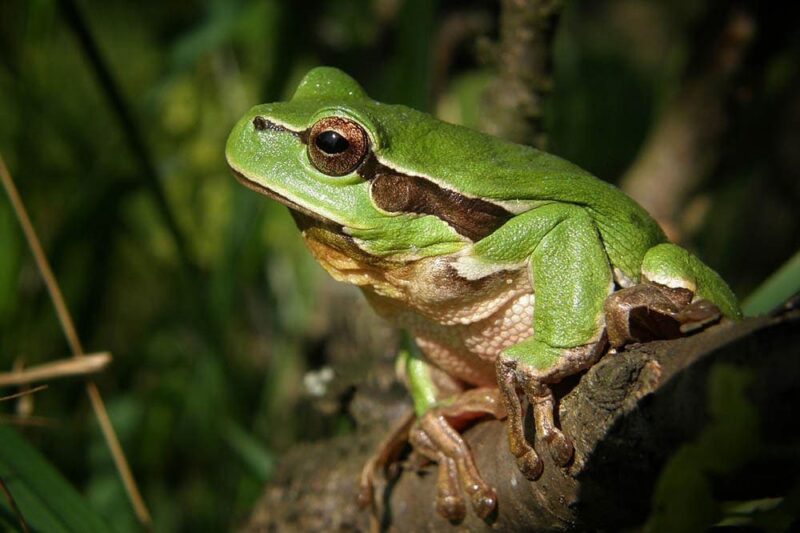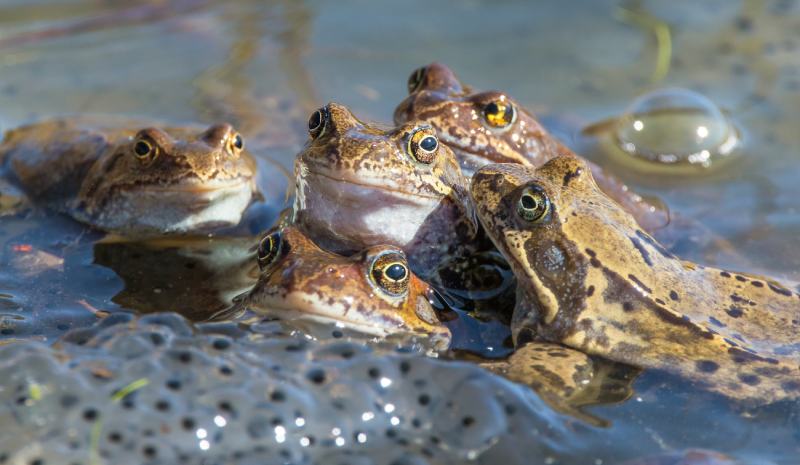Gray Tree Frog: Care Guide, Pictures, Lifespan and More
By Adam Mann
Updated on

Click to Skip Ahead
If you’re thinking about getting a unique pet, the gray tree frog should be near the top of your list. They’re super easy to care for compared to other reptiles and amphibians, and they’re among the coolest pets you can bring into your home. They’re fun to learn about and care for, and this guide will break down everything you need to know about them!
| Size: | Up to 2.25 inches long |
| Lifespan: | 7 to 9 years |
| Color: | Green, gray, or brown |
| Suitable for: | Beginner amphibian owners |
| Temperament: | Timid, solitary, and nocturnal |
| Diet: | Mites, spiders, snails, slugs, plant lice, crickets, mealworms, and waxworms |
| Tank Set Up: | Vertical with lots of hiding areas |
| Minimum Tank Size: | 12” x 12” x 18” |
| Suitable Tank Mates: | None |
The gray tree frog is the perfect amphibian for beginners. However, keep in mind that they’re solitary creatures, so if you’re looking for a tank full of frogs, this isn’t the way to go.
Still, because they’re so easy to care for compared to other amphibians, it’s easy to see why they’ve remained so popular throughout the years, even if you shouldn’t mix and match them with other pets.
Gray Tree Frog Breed Characteristics
Gray Tree Frog Overview
A gray tree frog is an outstanding pet, but there’s a lot that goes into getting and caring for one. From how much you’ll spend to set up everything to care for them, we’ve highlighted everything you need to know down below.

Gray Tree Frog Cost
Compared to many other amphibians, a gray tree frog isn’t all that expensive. They generally cost somewhere between $30 and $100, depending on the color and rarity of the specific frog you go with.
Overall, though, the gray tree frog is a fairly common frog, and you can find them at many pet stores or with a specific breeder. But keep in mind that this cost is only the cost of the frog itself. Once you factor in everything, you’ll need to properly care for the gray tree frog, which can drive the cost up quite a bit.
Care Guide & Tank Set Up
Before you get a gray tree frog, you need to set up their tank and know how to care for them. Ensure you provide tons of coverage for them inside their enclosure because gray tree frogs love to hide and don’t feel comfortable out in the open.
Tank Size
Gray tree frogs thrive in a vertical tank, and the very minimum size enclosure you should get for a single frog is 12 x 12 x 18 inches, with 18 inches being the height of the tank. If you go larger, the green tree frog will appreciate extra space.
Substrate
When picking a substrate for your gray tree frog, aim for something that isn’t loose because your gray tree frog can eat it, but it should be something that can stay moist and help retain humidity inside the enclosure. With that in mind, we think coarse orchid bark is a great choice.

Humidity
Gray tree frogs need lots of humidity to stay happy and healthy, and the humidity level inside their enclosure should remain between 50–80% at all times.
Lighting
Gray tree frogs need normal night and day cycles to thrive. While gray tree frogs are nocturnal, they sleep out in direct sunlight, and they need typical day and night exposure to meet all their needs.
Heating
Compared to many other reptiles and amphibians, gray tree frogs have fairly simple care requirements for heat. They need to remain in an environment that’s warmer than 68°F, but it doesn’t need to be much hotter than this.
You might need a low-wattage heat lamp to keep the tank above 68°F on cold days, but most of the time, you don’t need to worry about this.
Things to Know When Owning a Gray Tree Frog:
If you’re thinking about getting a gray tree frog, there are several things you should know before bringing one home. From food and diet requirements to how long they’ll live, we’ve gone over all the basics for you here:
Food & Diet Requirements
Gray tree frogs are opportunistic feeders in the wild and will happily gobble up any insects that come their way. When kept as pets, you can control the number and types of insects they get, but you still have a lot of leeway on what you feed them.
Aim for three to six insects every 2–3 days. You can feed them crickets, mealworms, waxworms, or just about any other insect you can find at the pet store. Do not feed your frog wild insects, as these might carry diseases or bacteria that can get your frog sick.
Water/Liquid Requirements
You should leave a small bowl of water out for your gray tree frog at all times, and you need to keep the humidity levels up in the tank. Mist the tank once a day to help keep the humidity levels up and to provide a little extra water to the tank.
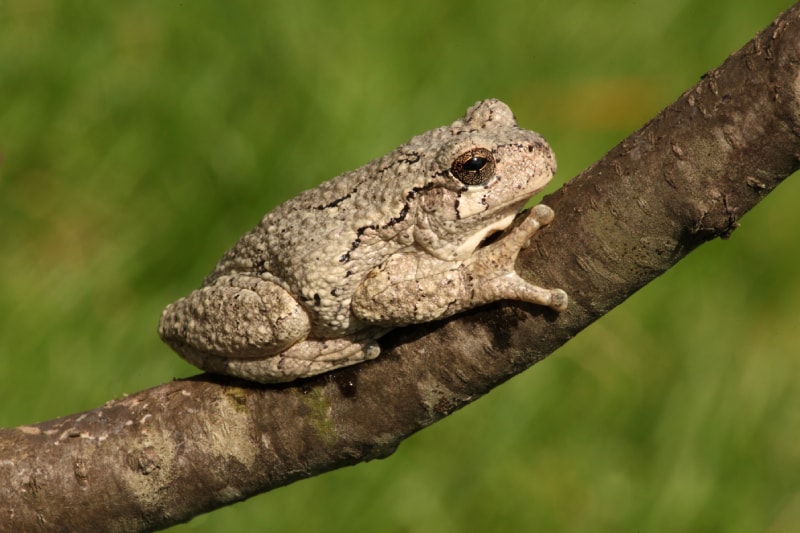
Size & Growth Rate
Gray tree frogs are small frogs that range from 1.25–2.25 inches in size, depending on the gender and genetics of the frog. Males tend to be between 1.25–2 inches in length, while females tend to be a little larger, with a length between 1.5–2.25 inches.
Because of their small size, it doesn’t take long for a gray tree frog to make it to full size, and you likely won’t notice much of a difference since, most of the time, you buy a gray tree frog near full adulthood anyway.
Varieties
While there are different colored tree frogs out there, generally, there is only one type of “gray” tree frog. Just keep in mind that while they fall under the same variety, they do come in different colors. You can find gray tree frogs that are completely gray, some with more green, and some with more brown.
Lifespan and Health Conditions
Gray tree frogs tend to be extremely healthy pets, and as such, there aren’t a lot of health conditions you need to keep out for. In fact, if you care for your gray tree frog properly, you shouldn’t even need to worry about most health problems.
Still, these are things you need to keep an eye out for, and if you can’t figure out what’s going on with your frog, we highly recommend taking them to the vet as soon as possible.
- Red leg
- Calcium deficiency
Male vs Female
There aren’t a lot of differences between a male and female gray tree frog. However, females tend to be a little larger than males. Both genders are nocturnal and hunters by nature, though, and both like to hide as much as possible.
3 Little-Known Facts About Gray Tree Frogs
1. Not All Gray Treefrogs Are Gray
While gray is right in the name, some gray tree frogs have more gray than others. Other tree frogs have more brown, while others have more green. They’re still gray tree frogs, but they come in a different color!
2. The Tips of Their Hands and Feet Secrete Adhesive
Tree frogs are climbers, and the gray tree frog is no exception. Each of the tips of a gray tree frog’s hands and feet is webbed, and they secrete an adhesive that helps them stick to things as they climb.
3. Gray Tree Frogs Are Nocturnal
If you’re hoping to watch your gray tree frogs roam around, that’s generally not the case with these frogs. They’re nocturnal in the wild, and they’ll be nocturnal while in activity, so keep this in mind when trying to observe them!
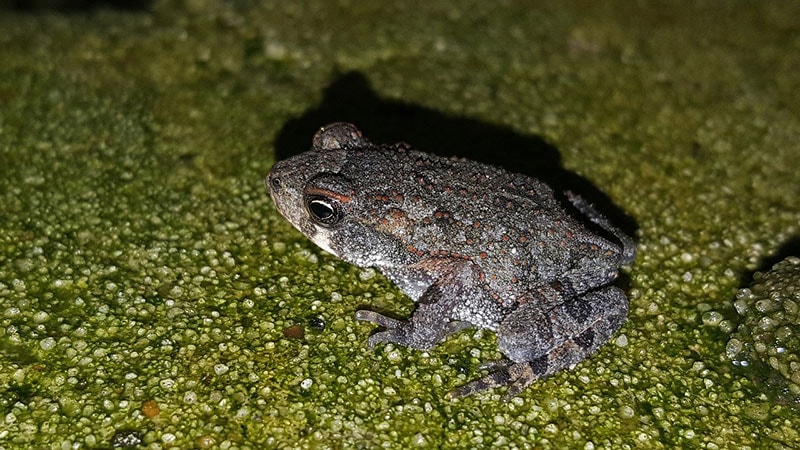
Final Thoughts
Now that you know a little more about the gray tree frog, all that’s left is to decide if you want to get one. These frogs do great as solitary pets, they’re fairly easy to care for, and they’re super cool to watch move around at night.
They’re certainly among the more interesting pets you can own, and if you’re ready for an exotic pet, they’re an outstanding choice!
Featured Image Credit: Fburnette, Shutterstock

